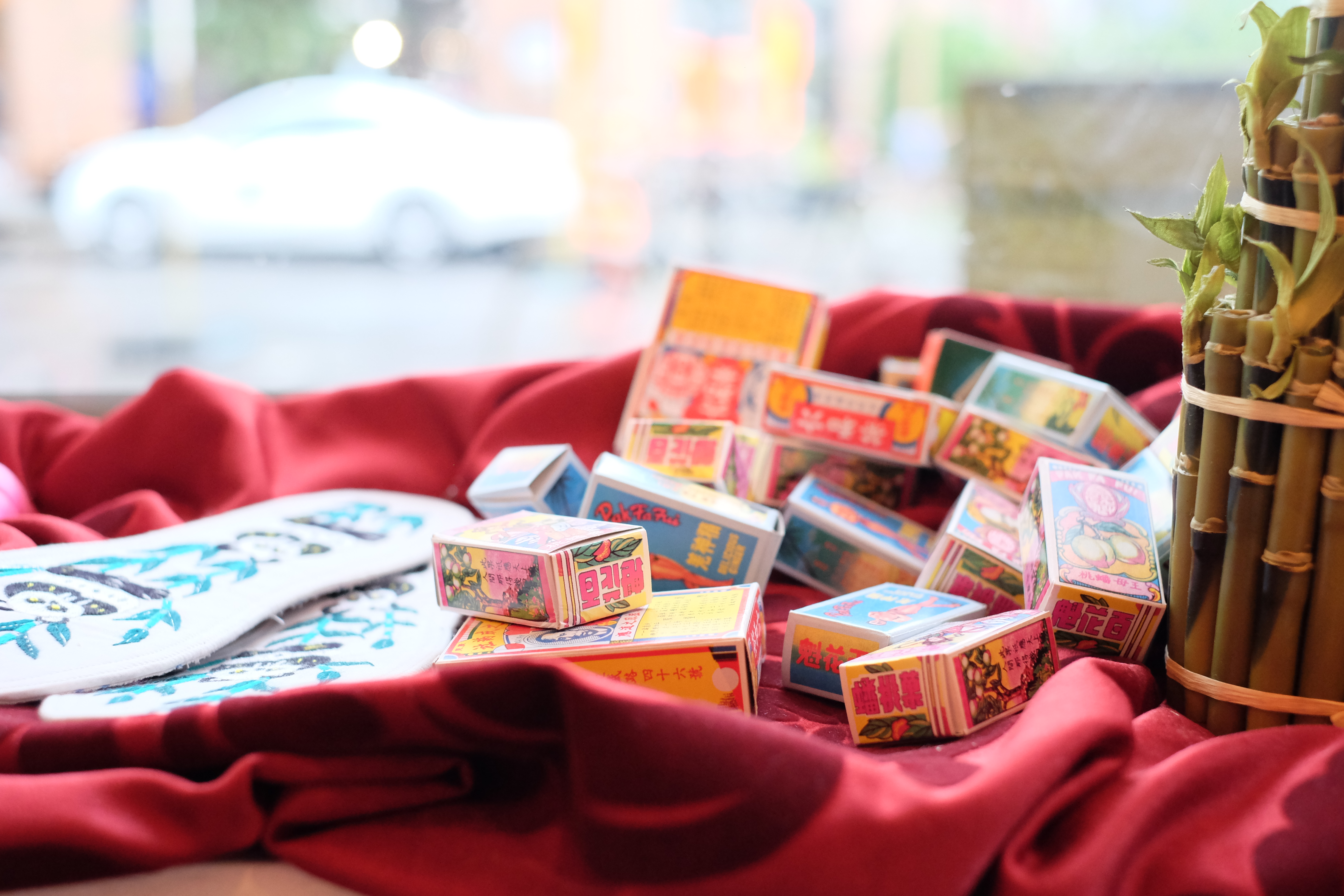Upon entering Karen Tam’s “Terra dos chinês curio shop,” the viewer immediately encounters a blue and white porcelain vase. There’s nothing remarkable about it – that is, until you notice the huge HomeSense price sticker proclaiming it to be worth “$24.99 (COMPARE AT/COMPARABLE À $40.00!).”
Objects such as this vase, made expressly for consumption in Europe and North America, date back centuries to the chinoiserie – art and decorative objects, furniture, and architecture that evoked or imitated Chinese motifs – that decorated palaces across Europe. Whether produced in Asia or Europe, these objects always catered to European fetishistic understandings of the exotic “Orient.” Like the chinoiserie of yore, the items in Tam’s installation, plucked from the likes of HomeSense, souvenir shops, and eBay, present a fantasy image of Chinese culture as imagined by the West.
[Is] the ornament before you made of jade or soap?
Tam, who holds a Master of Fine Arts in Sculpture from the School of the Art Institute of Chicago and a PhD in Cultural Studies from Goldsmiths, University of London, creates works that meditate on how visual and spatial cues, which serve to exoticize a given culture, are constructed. In the past, she has recreated various spaces dominated by these cues, such as the Chinese restaurant, karaoke lounges, and opium dens, in order to explore Western perceptions of the Chinese as Other.
In “Terra,” a work which she first debuted in 2015 at Artspace in Peterborough, Ontario, Tam plays up the faux-authenticity of a variety of found objects by displaying them with her own imitations, which are made out of common household materials. In one glass case, jade ornaments made of soap hide among piles of the “real thing.” On another shelf, vases made of papier-mâché rest side-by-side with antiques made of porcelain. Another display houses a flashy recreation of a cloisonné vase made of sequins and Styrofoam. In this manner, Tam questions the reliability of the viewer’s eye – is the ornament before you made of jade or soap? Does the porcelain antique have any more authenticity than the one Tam has fashioned out of papier-mâché’d Chinese newspapers?
[…] Tam invites the viewer to critically engage with objects that, to the unassuming Western eye, would register as authentically and traditionally Chinese.
This game of spot-the-fake is how Tam invites the viewer to critically engage with objects that, to the unassuming Western eye, would register as authentically and traditionally Chinese. From their inception, the objects are meant to convey to the Western gaze a sense of “mystical” oriental authenticity. As such, on the HomeSense shelf and subsequently in the home of the HomeSense shopper, the aforementioned blue and white vase, by nature of its arabesque design, porcelain constitution, and the giant Chinese character on the front, would signify just that.
The HomeSense vase, while similar to its 18th century chinoiserie predecessors, also demonstrates what has changed since then. This vase, despite having been designed for Western consumption and sold at a Canadian HomeSense, was nevertheless very likely made in China. In fact, a majority of the items in stores like HomeSense, whether they are coded ethnic or not, are likely made in countries like China, India, Malaysia, and the Philippines, among many others, where labour and production costs are significantly lower than in the countries where they are ultimately sold.
The concept of […] authenticity is itself a fabrication of oppressive colonial regimes and relations, as a means of […] profiting from original minority works and voices.
The production of this vase is stratified such that one appropriative design may be replicated cheaply by exploited foreign labour, sold domestically at a reduced rate of $24.99, and still make a profit for the transnational corporation that produces the objects. On the other end of the spectrum, Tam’s fakes are made to be one of a kind, and by an artist with a Western education and audience, thus raising them to a seemingly higher monetary and artistic value. The irony that a fake is somehow more genuine or precious than the original unveils the absurdity of proscribing artistic or monetary value to certain objects over others.
Moreover, by juxtaposing objects of varying shades and degrees of authenticity, Tam disrupts the concept of authenticity altogether. By questioning and complicating what it is that makes an object authentic, Tam deconstructs the notion that an object can be essentially, traditionally, or authentically anything. The concept of cultural traditionalism and authenticity is itself a fabrication of oppressive colonial regimes and relations, as a means of marginalizing, obscuring, Othering, and profiting from original minority works and voices. Therefore, the experience of viewing these objects as a collective installation is to recognize the complexities of ethnic spaces starting with – but far exceeding – the Chinatown curio shop.
“Terra dos chinês curio shop” is on display until October 2 at articule.

